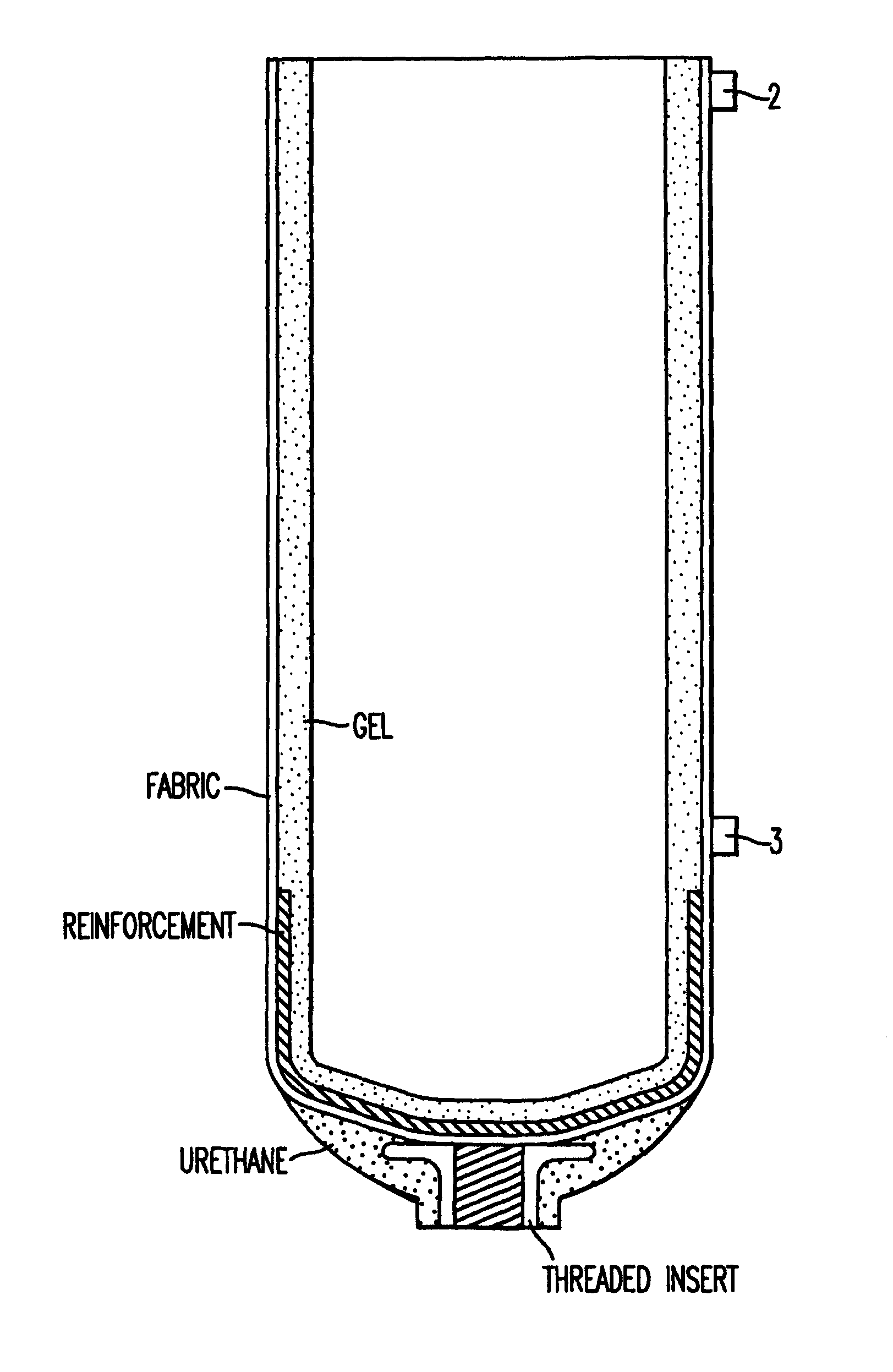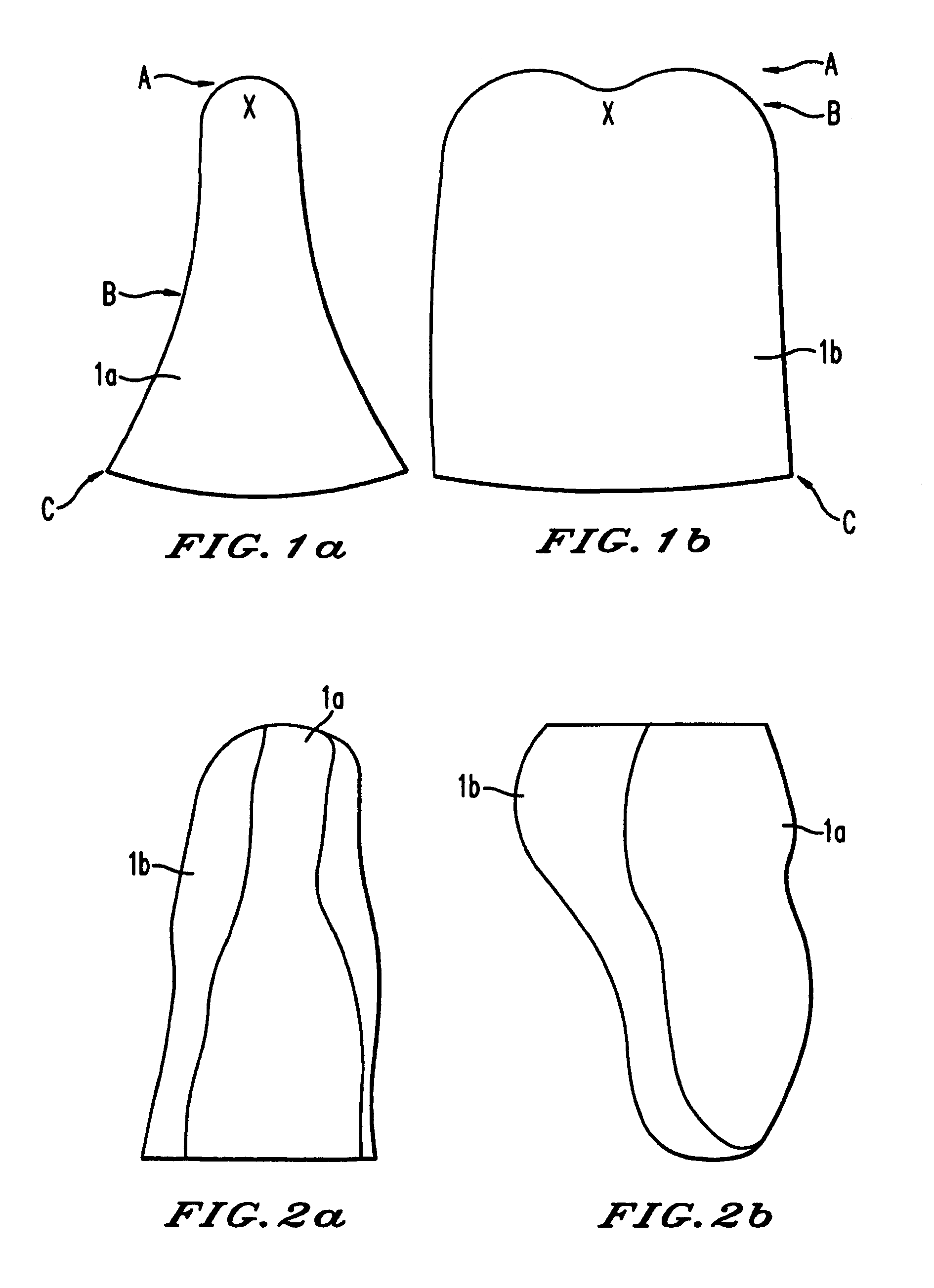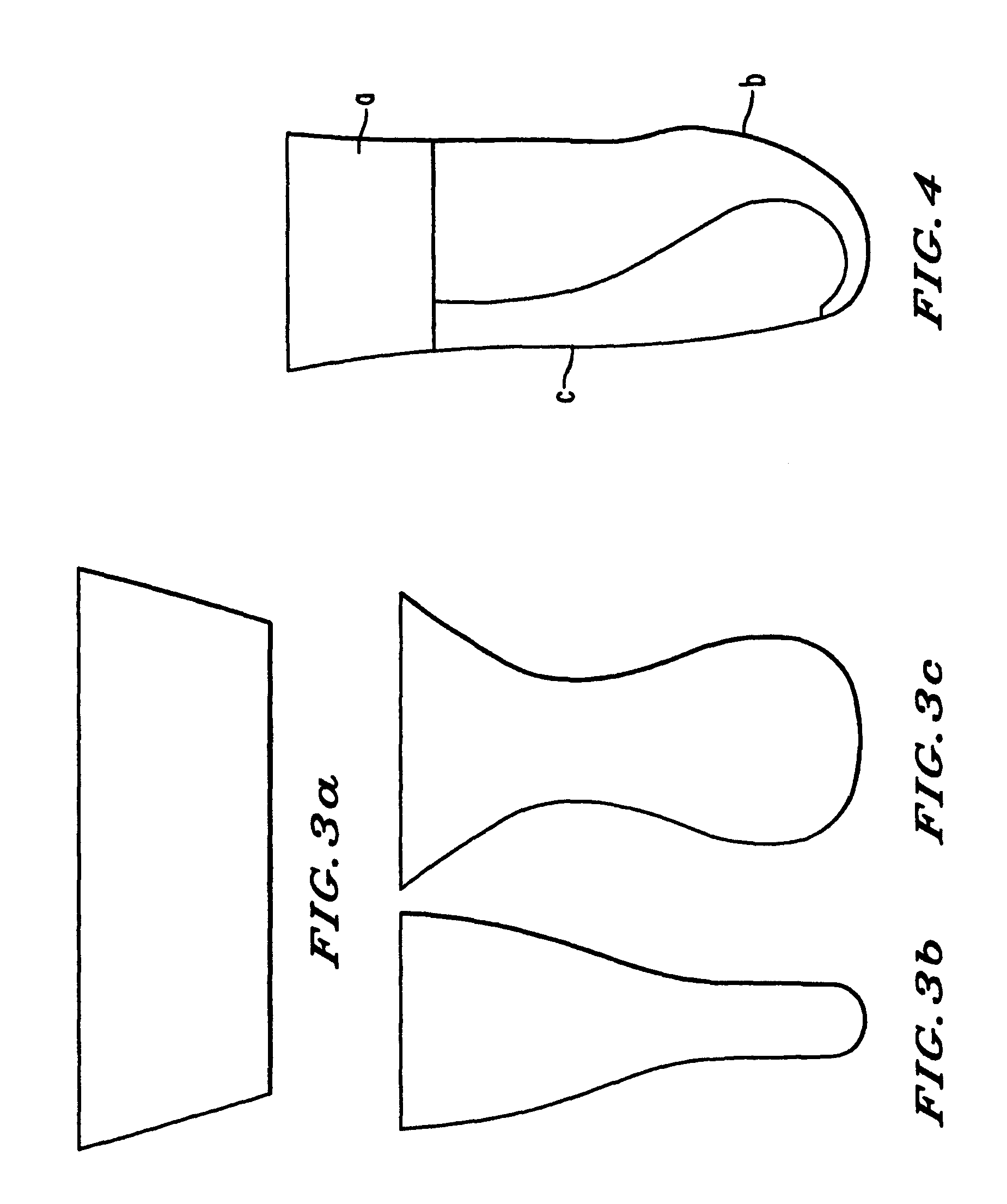Prosthetic socket interface and assembly
a technology of prosthetic sockets and sockets, applied in the field of prosthetic socket interfaces and assembly, can solve the problems of inability to wear prosthetic legs, and inability to meet the needs of patients, and achieve the effect of increasing comfor
- Summary
- Abstract
- Description
- Claims
- Application Information
AI Technical Summary
Benefits of technology
Problems solved by technology
Method used
Image
Examples
example 1
[0125]A form-fit next-to-skin sock was prepared from an 88% supplex nylon / 12% lycra spandex jersey knit fabric using woolly nylon thread and a surged flat-locked stitch. The sock comprises two pieces of fabric, the first piece having the pattern described in FIG. 1a, the second piece having the pattern described in FIG. 1b.
[0126]A mixture of melted Kraton® rubbers obtained from Shell (G1652) and GCS (6705) and Duoprime® 70 oil (mineral oil) was prepared, the sewn inverted sock was then placed over a mold facsimile of an amputation stump having recessed portions at what would be either side of the tibia and dipped into the molten Kraton® blend at an angle of 24°-28° with regard to the plane of the surface of the molten Kraton® and removed. The mold was spun during drying. A form-fit cushioned stump sock was obtained having adhered cushioning material in a recessed Achilles arrangement on the interior thereof.
example 2
[0127]A 1 / 16 inch thick neoprene textile fabric with nylon tricot surface treatment for above the knee contact was used to prepare a three-piece form fitting sleeve member according to the present invention using the pattern described in FIG. 3. The 1 / 16 inch neoprene material for the below the knee segment of the invention sleeve had nylon on the exterior side and looped nylon on the interior side. The against the skin side of the above knee segment of the invention sleeve was neoprene which provided a high friction bond. This form fitting sock was dipped into molten Kraton® (a blend of tough and soft Kraton® used in Example 1) at an angle of 24°-28° to provide a cushion material on the interior thereof. The resultant composite sock of nylon, neoprene, looped nylon and cushioning rubber provides a durable cushioned sleeve member which, when impregnated with rubber, has an approximate thickness of ⅛ inch.
example 3
[0128]A Polartec® 2000 stretch laminate fabric having an 85% nylon / 15% Lycra® spandex face and a 94% polyester / 6% Lycra® spandex back was used to prepare an invention sleeve member using the pattern described in FIG. 1. The resultant sleeve member is a formfitting tubular member for enclosing an amputation stump.
PUM
 Login to View More
Login to View More Abstract
Description
Claims
Application Information
 Login to View More
Login to View More - R&D
- Intellectual Property
- Life Sciences
- Materials
- Tech Scout
- Unparalleled Data Quality
- Higher Quality Content
- 60% Fewer Hallucinations
Browse by: Latest US Patents, China's latest patents, Technical Efficacy Thesaurus, Application Domain, Technology Topic, Popular Technical Reports.
© 2025 PatSnap. All rights reserved.Legal|Privacy policy|Modern Slavery Act Transparency Statement|Sitemap|About US| Contact US: help@patsnap.com



